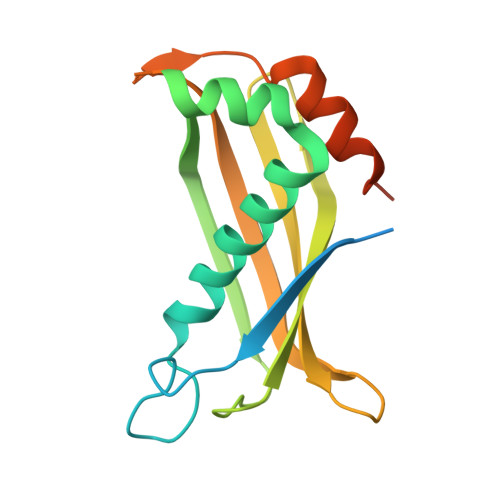Functional and Structural Studies on the Esperamicin Thioesterase and Progress toward Understanding Enediyne Core Biosynthesis.
Hankore, E.D., Miller, M.D., Kosgei, A.J., Xu, W., Tan, K., Endres, M., Bhardwaj, M., Joachimiak, G., Joachimiak, A., Phillips Jr., G.N., Thorson, J.S., Van Lanen, S.G.(2025) J Nat Prod
- PubMed: 41066299
- DOI: https://doi.org/10.1021/acs.jnatprod.5c00660
- Primary Citation of Related Structures:
9CCR - PubMed Abstract:
Enediynes are among the most potent antitumor and antibacterial natural products. Studies on their biosynthetic pathways have identified a shared, linear polyene precursor generated from an iterative type I polyketide synthase (PKSE) as the source of the enediyne warhead. A key step is the release of this polyene from the PKSE by a discrete thioesterase (TE). Here, we used X-ray crystallography, site-directed mutagenesis, and heterologous coexpression of PKSEs and TEs to elucidate how enediyne TEs mediate the production of the polyene. We solved the structure of wild-type EspE7 from esperamicin producer Actinomodura verrucosospora . The substrate binding pocket was also defined upon serendipitous cocrystallization of an EspE7 mutant with a fatty acyl-CoA ligand. Structural data and in vitro activity assays with EspE7 mutants provide strong evidence that Glu68 in EspE7 and the analogous Glu residue in other enediyne TEs functions as a key catalytic residue, thus supporting a hydrolysis mechanism for enediyne TEs that aligns with that of Pseudomonas sp. 4-HB-CoA TE. Furthermore, combinations of 9- and 10-membered enediyne PKSEs and TEs produced 1,3,5,7,9,11,13-pentadecaheptaene ( 1 ) as the major product. Thus, the data further support previous conclusions that 1 serves as the sole precursor for the biosynthesis of all enediyne cores.
- Pharmaceutical Sciences Department, University of Kentucky, 789 South Limestone, Lexington, Kentucky 40506, United States.
Organizational Affiliation:


















